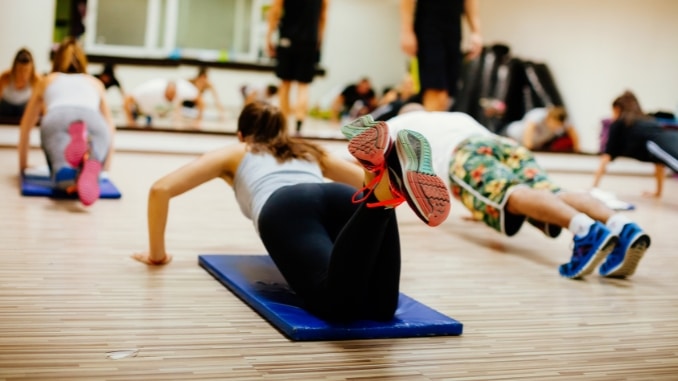Looking to burn calories quickly, enhance endurance, and elevate your fitness program? You’ve probably heard of high-intensity interval training [1]—aka HIIT. It’s everywhere in the fitness industry, hailed as a time-saving miracle. But is it all it’s cracked up to be?
Before you jump into sprint interval training or grueling HIIT workouts, let’s break down the interval training advantages and disadvantages—and whether it’s the best fit for your body and goals.
The Benefits of HIIT Training
1. Burn More Calories in Less Time
Thanks to intense bursts of effort followed by rest intervals, HIIT helps you burn more calories than traditional endurance training. A 20-minute interval training session can burn as many calories [2] as 60 minutes of steady-state cardio.
2. Boost Cardiovascular Health & Aerobic Capacity
Numerous studies support improved cardiovascular health and aerobic endurance after just a few weeks of consistent interval workouts. This improves heart health, circulation, and overall endurance.
3. Build Muscle & Burn Fat

Alternating between intense workouts and adequate recovery not only helps burn fat but can also encourage muscle growth—especially when paired with resistance training or bodyweight exercises.
4. Enhance Insulin Sensitivity
HIIT training has been shown to increase insulin sensitivity, helping with blood sugar regulation. That’s a big win for metabolic health and anyone looking to lose weight or manage energy levels.
5. Improve Performance & Endurance
HIIT improves both anaerobic capacity and aerobic endurance, making it an ideal method for athletes or anyone trying to level up their exercise performance or physical performance.
Just like any training method, interval training has its advantages—but it also comes with a few disadvantages.
The Downsides of HIIT: What You Need to Know
1. Risk of Overuse Injuries
With high-intensity sessions comes increased risk of muscle soreness, overuse injuries, and even health complications, especially if you skip a proper warm-up or don’t allow for adequate rest periods.
2. Not Ideal for Beginners
Interval training programs can be brutal if you’re new to regular exercise. Without guidance from a fitness professional, it’s easy to overdo intense effort and wind up burned out or injured.
3. Requires Longer Recovery Periods
Unlike moderate intensity continuous training, HIIT demands longer recovery periods, especially after very intense exercise. Inadequate recovery may lead to fatigue, decreased training performance, and diminished progress.
4. Hard to Maintain Consistency
Because of its demanding nature, sticking to a consistent HIIT workout schedule can be challenging. Unlike continuous running or moderate intensity exercise, intense sessions can feel daunting, reducing motivation.
Now that you’re familiar with the advantages and disadvantages of interval training, let’s dive into HIIT vs. traditional training.
HIIT vs. Traditional Training: Which Wins?
Let’s compare:
| Feature | HIIT (Interval Training) | Traditional Training (MCT) |
| Time Efficiency | High – 20-30 mins | Low – 45-60 mins |
| Calorie Burn | High-intensity – burns more calories post-workout | Moderate |
| Muscle Engagement | Full-body intense workouts | Lower muscle strain |
| Recovery Needs | Longer recovery periods are required | Shorter |
| Injury Risk | Higher, especially without guidance | Lower |
| Cardiovascular Improvements | Excellent for cardiovascular endurance | Good |
| Fat Burning | More effective short-term | Steady and sustainable |
“High-intensity interval training is incredibly effective—but it’s not a magic bullet. The key is applying it appropriately based on an individual’s fitness level and goals. Without adequate recovery, HIIT can backfire and lead to overtraining or injury.” — Dr. Len Kravitz, PhD, Exercise Scientist, University of New Mexico
Finding the Right Balance
Interval training offers [3] massive upside—when done right. The key? Balancing intensity with adequate rest, and cycling in lower intensity or continuous training to protect your joints and energy levels.
Mix HIIT with moderate intensity continuous training, fitness apps to guide your intervals, and regular check-ins with a fitness professional to adjust intensity based on your fitness level.
Final Thoughts: Should You Try HIIT?
If you’re short on time, chasing fat burning, and want a fitness routine that delivers quick results, interval sessions may be your new best friend.
But if you’re managing muscle soreness, dealing with injuries, or just starting your fitness journey, ease in. Start with lower intensity options and gradually build up to high intensity training.
Check out this 7 Minute HIIT Workout now!
Frequently Asked Questions
Is HIIT better than steady-state cardio for fat loss?
Yes—and no. HIIT burns more calories in less time and triggers a powerful afterburn effect (EPOC), which continues calorie burning after the workout. However, steady-state cardio is gentler on the joints and easier to stick with long-term. The best fat-loss strategy often includes both.
How many times per week should I do HIIT workouts?
For most people, 2–3 HIIT sessions per week is plenty. This allows for adequate recovery and helps prevent overtraining or muscle soreness. If you’re combining HIIT with resistance training or other cardio exercises, schedule your rest periods wisely.
Can beginners do interval training safely?
Yes—with modifications. Beginners should start with lower intensity interval training, longer rest intervals, and shorter overall sessions. Always begin with a proper warm up and focus on form over speed. Consider working with a fitness professional to create a safe and effective interval training program.
Is HIIT suitable for improving cardiovascular health?
Absolutely. Studies show improved cardiovascular health, aerobic capacity, and heart health from regular HIIT. It also boosts anaerobic endurance and is especially effective for time-crunched individuals seeking fast fitness improvements.
1. Laursen, P. B., & Jenkins, D. G. (2012). The Scientific Basis for High-Intensity Interval Training. Sports Medicine, 32(1), 53–73. https://link.springer.com/article/10.2165/00007256-200232010-00003?inline-read-more
2. Laster, J., & Frame, L. A. (2019). Beyond the Calories—Is the Problem in the Processing? Current Treatment Options in Gastroenterology, 17(4), 577–586. https://doi.org/10.1007/s11938-019-00246-1
3. Daniels, J., & Scardina, N. (1984). Interval Training and Performance. Sports Medicine, 1(4), 327–334. https://doi.org/10.2165/00007256-198401040-00006